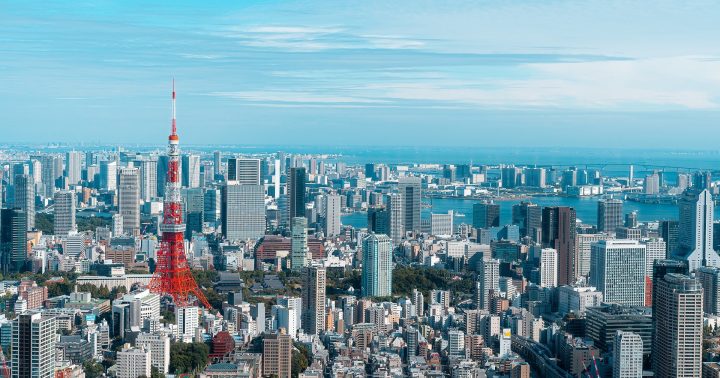Here, there, and everywhere: A travelogue from an AI seminar in Japan
On the 16th of March 2022, I had a chance to visit Tokyo, Japan, for the first time of my life. I was invited to speak about our Co-creativity in the Era of Artificial Intelligence project (LuotAI) in the hybrid seminar called “AI to Stretch the Borders of Arts”, organized by the Finnish Institute in Japan. The event took place on the 49th floor of the Roppongi Hills Mori Tower, with some marvellous view over the city – or that was what I heard.
That was there (in Japan) and I was here (in Finland).
Like all the international seminars and conferences over the past two years, I took part in the event from my own living room due to Covid-19 travel restrictions. Travelling to Japan has not come any easier over the past three weeks after Russia started the war in Ukraine and the Western planes were banned from flying over Russia. If earlier the flight from Helsinki to Tokyo took 10 hours, now the detour takes 13 hours. But that is the least of the problems with war.
Nevertheless, I was eager to participate and tell about our research to the Japanese and Finnish audiences even from distance, and likewise, to listen to the intriguing international presentations about AI, robotics, and arts from various, multidisciplinary viewpoints.
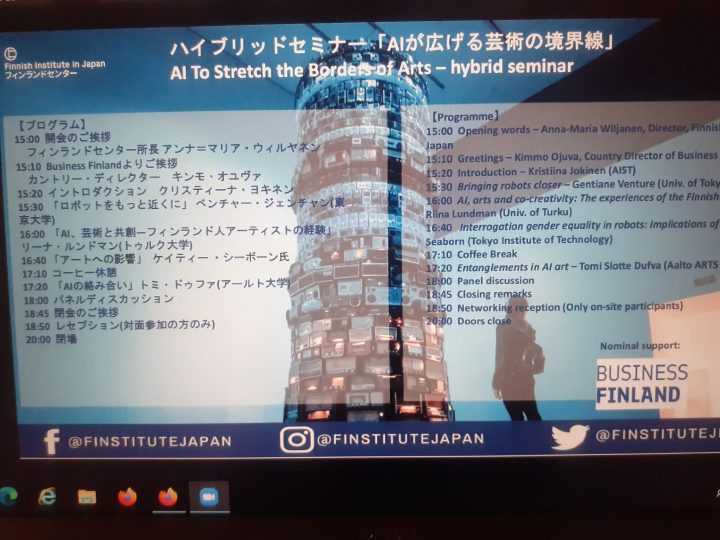
With my morning coffee next to me and my computer – time was 9 AM in Finland and 3 PM in Japan – we were all warmly welcomed to the event by the Director of The Finnish Institute in Japan, Anna-Maria Wiljanen. Dr. Wiljanen is an art historian by her background, which turned out to me later during the seminar. We received greetings also from Country Director Kimmo Ojuva from Business Finland, and an inspiring introduction to the topic – that is, AI and arts – was given by Senior Researcher Kristiina Jokinen from the AI Research Center (AIRC) of AIST Tokyo Waterfront.
Despite the highly fascinating beginning of the seminar, my mind wandered to think about when the cherry trees begin to blossom in Tokyo (the forecast is on the 20 of March, I checked, which would be in four days).
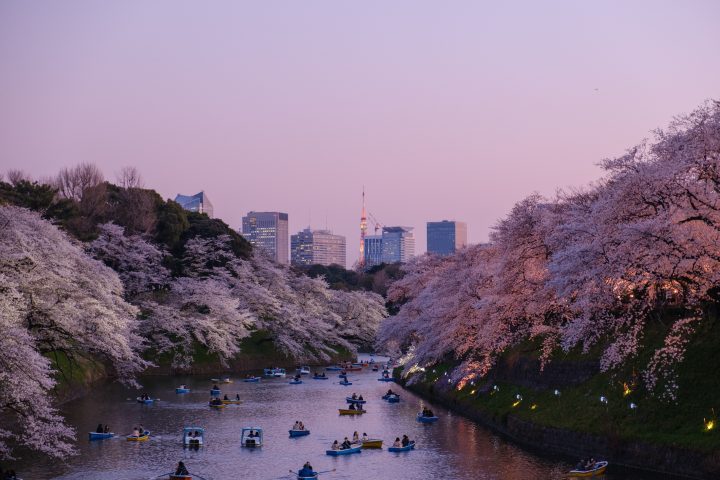
Professor Gentiane Venture from the University of Tokyo started the keynote talks with her presentation on “Bringing robots closer”. Venture leads a GVLab, where – in addition to the more general development of robotic intelligence control, sensing, and cognitive technology – also artistic experiments have been made to incorporate robots into art performances and installations. On the GVLAb website, Venture introduces herself by telling how she is “interested in how robots could change the world, or not”.
I could make several linkages between Venture’s perspectives on robots and our own research on co-creativity regarding AI. According to Venture, it is not only humans that need robots but also opposite, robots need humans. Interaction is all that matters, and therefore one needs to develop the “ontology of robots” and learn how to “live with the robots”. The same could be said about (co-)creative AI.
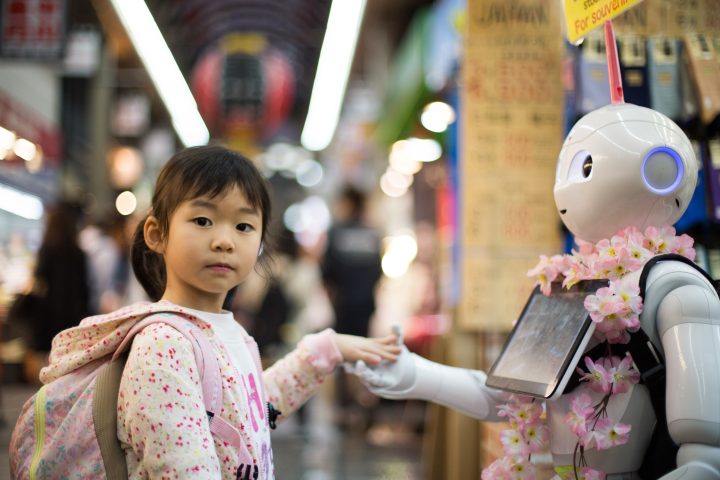
Moreover, Venture made a point that robots should not be only developed in research labs but also “in the wild”. In other words, robots should be studied among the end users and in their everyday environments, spaces, and encounters. This is, I believe, where us – the social scientists and geographers – would have a lot to give to the development of interactive technologies.
With these linkages, it was easy to leap to my own presentation, which was entitled “AI, arts, and co-creativity: The experiences of Finnish artists”. Our aim has been to study those end users mentioned by Venture, which in our case meant the artists that use AI in their everyday work. Especially, I spoke about co-creativity between humans and AI and how interesting art can be made when artists and AI are “jamming” together.
An interpreter translated my work into Japanese. I could recognize the word “co-creativity” in her speech. Is there not a Japanese equivalent for that term, I wondered.
The next speaker was Dr. Karen Seaborn who talked about the “Interrogating gender equality in robots”. Seaborn introduced herself as recovering media artist, who now works as an associate professor at the Tokyo Institute of Technology, with specialization in Interaction Design.
Seaborn joined the seminar from her home. Every now and then, a grey cat appeared on the screen. It likes the warmth of computers.
Seaborn and her colleague Peter Pennefather had just published two conference papers about gender neutrality and robots. As the questions of gender and gender biases are important also regarding AI, some new perspectives could be gained from the open access dataset they have provided about their research theme.
Then, there was a short coffee break. We were told that in Tokyo, there was a beautiful sunset that looked amazing from the 49th floor. Here in Finland, I ate my lunch (takeaway sushi) and solved a tricky algorithmic problem regarding the pattern of the Crochet Along project I was making while listening to the presentations.
Confession: I do needlework during video conferences to avoid the ”Zoom fatigue”.
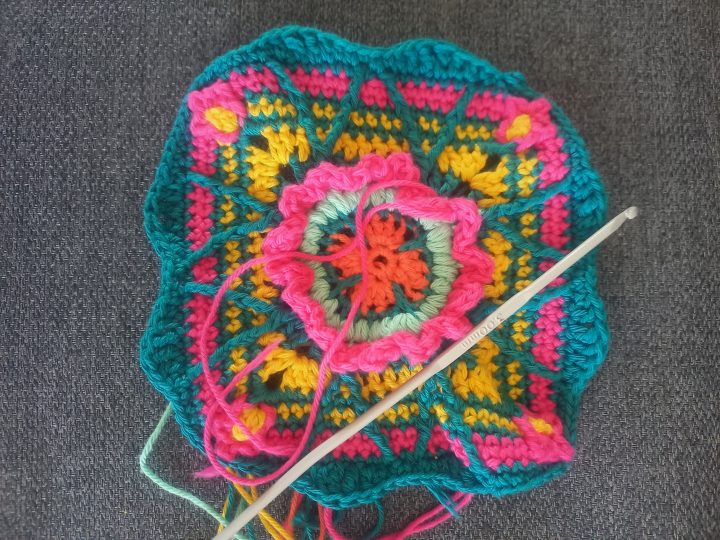
Dr. Tomi Slotte Dufva, who is an artist and a university lecturer at the Department of Art at Aalto University, joined the seminar from Finland. He spoke about the “Entanglements in AI art”, and also his presentation had many similarities with our LuotAI project. Like us, Slotte Dufva claimed that creativity with AI is not a black-and-white issue but a many-sided and ambiguous phenomenon.
To prove his point, Slotte Dufva presented three different ways to approach AI in arts. AI can be seen as an assistant and material for art with a certain level of agency; yet, it does not think. Another way to understand AI is to grasp it not as artificial intelligence but as artificial stupidity: AI is stupid. The third approach to AI in arts is close to co-creativity; it is about artists and AI collaborating together. Here, Slotte Dufva referred to the artist Sougwen Chung and quoted her: “Where does ‘I’ end and ‘we’ begin?”
During Tomi’s presentation, I checked the latest news from the war in Ukraine. Someone had made a deepfake video of President Zelenskyi with the help of AI. Creative AI can also be used for evil.
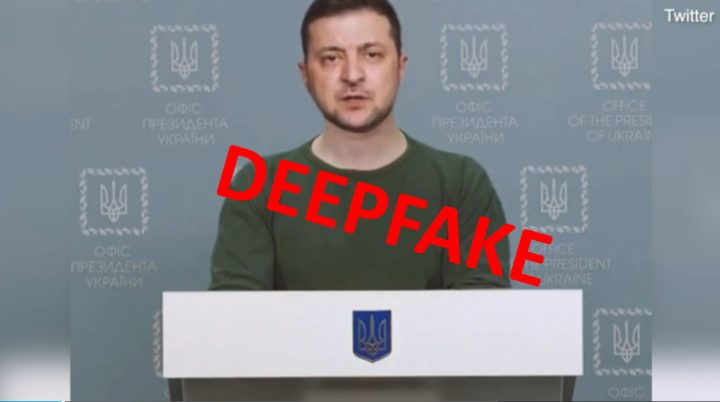
Slotte Dufva finished his presentation by asking how artists should now deal with their new and complex material and medium of AI. The answer was left open, which, I think, is the best way to approach the topic: Let the artists be free and creative in their endeavours with AI and something new, interesting and valuable can happen (which, by the way, is how the cognitive scientist and AI researcher Margaret Boden defines creativity).
The last part of the hybrid event was a panel discussion with all of us speakers. The topics covered were, for instance, the dispute over authorship in arts and AI and whether a creative process is individual or social. I answered that to me, as a geographer, processes are always relational. Different actors, environments, and materials affect the process and vice versa, with AI being one of the creative agencies beside humans.
The discussion was fruitful and I got carried away with it so much that I forgot that there was an audience behind the screen, in Japan. What I enjoyed about the panel discussion was how we – people from different countries, languages, and research fields – got together and were able to speak about AI and its potential and threats.
AI is a topic that interests people here (in Finland), there (in Japan) and everywhere (even in arts). Perhaps we really are entering the era of AI.
Epilogue: A couple of hours after the seminar, a powerful earthquake of 7,4 magnitudes occurred off the coast in north-eastern Japan and some parts of Tokyo faced electric stoppage. That reminds us that although AI might be everywhere, it is not everything. There are still earthquakes, wars, and deadly pandemics. But there are also morning coffees, cherry blossoms, cats, sunsets, crochets, sushi, and hybrid seminars. Although my visit to Japan was reduced to a travel in my own living room, I still found it fascinating and felt a sense of togetherness when discussing how AI can stretch the borders of arts and much more.
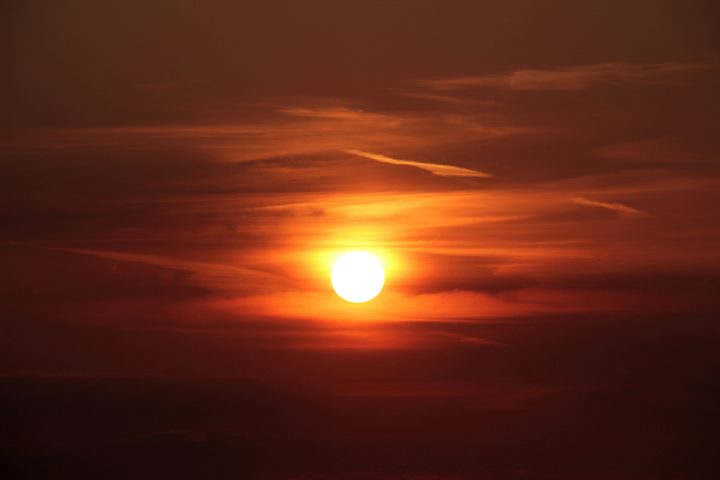
Photo credits
Tokyo skyline (Pixabay)
Seminar program in Japanese and English (Riina Lundman)
Sakura in Tokyo (Yu Kato, Unsplash)
A robot and a child (Andy Kelly, Unsplash)
Mandala Cushion Crochet Along (Riina Lundman; pattern Mariko Palomaa)
Deepfake of Zelenskyi (screenshot from a video; source unknown)
Sunset (Pixabay)

